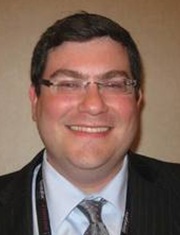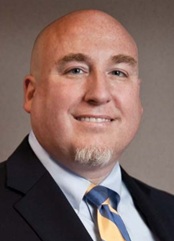拉斯维加斯——在全球微创妇科学大会(AAGL)上,纽约Montefiore医疗中心的妇产与女性健康科主任 Scott Chudnoff 博士报告称,超声引导下射频消融术可能给疼痛性子宫肌瘤患者提供一种新的无创性治疗选择。

Scott Chudnoff博士
Chudnoff 博士报告了一项国际性Ⅲ期单组研究的结果,该试验在135例年龄30~45岁的症状性子宫肌瘤连续患者中评估了Acessa系统治疗中重度出血的安全性和疗效。
基于该研究结果,美国食品药品管理局(FDA)已于2012年11月6日,也就是AAGL大会刚刚开幕之时,正式批准Acessa用于子宫平滑肌瘤的治疗。Acessa现已在加拿大和欧洲上市,该系统是在腹腔镜超声引导下将电极阵列插入肌瘤以释放射频能量,从而达到缩小肌瘤的效果。
大约1/5的女性在育龄期内都可能出现子宫肌瘤,几乎一半的50岁以上妇女都存在子宫肌瘤。许多肌瘤都是无症状性的,但它也是导致子宫切除的主要原因之一。上一次子宫肌瘤治疗选择的变化出现在5年多以前,那时将MRI引导下聚焦超声消融术用于子宫肌瘤的治疗,但相关研究数据多少有些令人失望。
Chudnoff 博士观察发现,目前针对子宫肌瘤的治疗手段很多,但大多都是对症治疗,而没有针对肌瘤本身。子宫动脉栓塞治疗是一种很好的方法,但它可能对整个子宫造成全面的破坏,因此有人担心这会影响患者未来的生育能力。宫腔镜下肌瘤切除术对于黏膜下肌瘤有效,但往往操作困难,患者通常也有其他类型的肌瘤。最后还有子宫肌瘤切除术,这是一种“出血量较大的有创性治疗,患者往往需要接受剖宫术,而且复发率在80%左右”。
Chudnoff 博士说:“那么,当一名35岁的子宫肌瘤患者前来就诊时,我们能为她做些什么呢?我认为应该在患者的症状变得非常明显之前及早处理,采用直接针对肌瘤的治疗手段来治疗子宫肌瘤。如果5年或10年后患者又出现了新的肌瘤,我可以再次治疗,但这与再次施行子宫肌瘤切除术或者在接受过子宫肌瘤切除术的患者中施行子宫切除术相比区别很大,后者可能给患者带来灾难性的损伤。”
在这项试验中,所有患者均存在临床月经过多(每月经周期失血量160~500 cc)、肌瘤数不超过6个(平均5个)并且子宫总体积≤300 cc。肌瘤类型包括:193个浆膜下肌瘤、347个子宫壁内肌瘤、39个跨子宫壁肌瘤以及164个黏膜下肌瘤。该试验没有纳入带蒂肌瘤或0型肌瘤,因为担心在蒂底部进行消融治疗可能会导致二重感染等继发性潜在并发症。
总共有674个子宫肌瘤接受了Acessa治疗,其中96.2%在门诊进行。患者在术后平均7~10天内恢复正常活动,恢复工作的中位时间为9天(范围0~29天)。
Chudnoff博士报告称,基于经确证的子宫肌瘤症状与生活质量(UFS-QOL)问卷的患者自我报告症状严重程度评分显示,从基线平均61.4分下降至第3个月的28.7分,第6个月降至28.6分,第12个月则进一步降至26.4分,第12个月与基线相比差异有统计学意义(P<0.001)。与此同时,UFS-QOL生活质量的平均得分从基线时的37.1分分别提高至第3、6和12个月时的75.2分、78.1分和80分(第12个月,P<0.0001)。Chudnoff博士指出:“重要的是,患者情况持续改善,且一直维持在较高的水平。”
此外,欧洲五维度健康量表(EQ-5D)的平均得分也从基线时的70.7分提高至第3个月时的84.9分,第6个月时的84.6分以及第12个月时的85.7分,第12个月与基线相比差异有统计学意义(P<0.0001)。
试验中,共出现了5例(3.7%)器械相关不良事件:1例下腹疼痛、1例盆腔脓肿、2例子宫表层浆膜烧伤和1例治疗后出血。1例患者在6个月随访前退出试验,之后接受子宫动脉栓塞治疗,因此再干预率为0.7%。
在会上的另一次报告中,其他Acessa研究者报告称,第3个月和第12个月时的平均子宫体积分别显著减少了16%和25%,平均肌瘤体积分别显著减少了38%和44.3%,差异均有统计学意义。此外,69%的患者月经失血量出现了具有重要临床意义的减少(平均减少101.6 cc)。
碱性血红素水平下降与肌瘤缩小相关。基线时患者的平均碱性血红素水平为271.5 ml,第3个月时下降了31%,第6个月时下降了41%,第12个月时下降了38%(均P<0.0001)。
Chudnoff博士在讨论这项研究时说,生活质量并非与肌瘤体积缩小直接相关,但出现了肌瘤缩小的所有患者其症状均得以缓解。
最后,当被问及这种射频消融术的总有效率时,Chudnoff博士回答道,98%的患者称会向朋友推荐Acessa,95%表示对治疗满意,94%认为治疗有效。
Chudnoff博士总结道:“我的确认为这会改变子宫肌瘤的总体治疗准则。射频消融术的优势在于操作简单并且风险很小。Acessa可以说是这些年来我第一次看到的确实能改变妇科实践的一种新技术。”
Chudnoff博士及其同事声明担任该研究资助方Halt Medical公司的主要研究者。还有一名作者声明担任了Halt公司的顾问。
相关评论:关于射频消融术尚无定论
虽然Chudnoff博士及其同事开展的前瞻性单组试验(只报告了前12个月的随访结果)表明采用Acessa靶向射频消融术治疗子宫肌瘤大有前途,但我还是要提醒读者在全面采用这种技术之前应谨慎考虑。

Patrick J. Woodman博士
之前靶向血管栓塞治疗用于子宫肌瘤也得到了类似的鼓舞人心的结果。决定积极推广使用子宫动脉栓塞治疗会给很多放射科医生带来更大的经济效益,而不高兴的妇科医生却还得处理不可避免的疼痛、出血等并发症。
同样令人担忧的还有作者所谓的“风险很低”这一说法。虽然我相信“腹内”超声引导技术将来有可能经阴道途径完成,但这种方法还是会导致1.5%的患者出现“子宫表层浆膜烧伤”。这意味着在不采用腹腔镜下超声引导时患者还存在肠道损伤的风险。
FDA对这一技术的批准的确令人更加安心,而且美国注册研究以及加拿大和欧洲研究都确认了这种治疗技术的安全性和疗效。Chudnoff博士开展的研究也显示,患者问卷的主观“满意度”和“有效性”评分都很高。然而,鉴于研究的随访期很短,因此难以预测多少受试者会复发或者最终需要接受子宫切除术。
最后,我提醒读者注意“具有统计学意义的差异”与“具有临床意义的差异”之间的区别。虽然UFS-QOL和EuroQoL都是经过确证的子宫肌瘤问卷,但就我对已发表文献的了解来看,并没有关于这些指标“最小临床意义”差异的定义标准。如果症状不严重,或者“烦恼”程度很低,那么即便症状严重程度下降50%或者QoL评分改善50%也说明不了什么。
PATRICK J. WOODMAN, D.O.是一名泌尿妇科医生、妇产科副教授,担任美国印第安那州玛丽安大学骨科医学院的专科主任。他声明无相关经济利益冲突。
By: PATRICE WENDLING, Internal Medicine News Digital Network
LAS VEGAS – Ultrasound-guided radiofrequency ablation offers women a new, noninvasive treatment option for painful uterine fibroids.
"I actually think this changes the entire outlook," Dr. Scott Chudnoff said at the AAGL Global Congress. "The beauty of this is the simplicity. The risk is so low.
"I’ve been coming to AAGL for years and what I love about it is seeing the new technology on the horizon, and this is the first one in a few years that is a real game changer for the organization and for gynecology in general," he said in an interview.
He presented data from an international, phase III, single-arm study evaluating the safety and efficacy of the Acessa system to treat moderate to severe bleeding in 135 consecutive women, ages 30-54 years, with symptomatic fibroids.
The results prompted the Food and Drug Administration to clear Acessa for the treatment of uterine leiomyoma on Nov. 6, 2012, just as the AAGL Congress kicked off.
Acessa is already in use in Canada and Europe, and shrinks fibroids using radiofrequency energy delivered via an electrode array inserted into the fibroid under intra-abdominal laparoscopic ultrasound guidance.
One in five women may have fibroids during their childbearing years, and they are present in half of all women by aged 50 years. Many are asymptomatic, but fibroids are also one of the leading causes of hysterectomy.
The last time there was a change in fibroid treatment options was more than 5 years ago with the arrival of MRI-guided focused ultrasound ablation, but the data on this have been somewhat disappointing, said Dr. Chudnoff, director of obstetrics and gynecology and women’s health at Montefiore Medical Center in New York.
There are a range of medical therapies, but they primarily target the symptomatology and not the fibroid itself. Uterine artery embolization is a fantastic procedure, but it’s a global destruction process of the entire uterus, and there are concerns regarding future fertility, he observed. Hysteroscopic fibroid resection is useful for submucosal fibroids, but access is often difficult and women typically have other types of fibroids as well.
Finally, there’s myomectomy, "a bloody, invasive procedure that more often than not dooms the patient to having a Cesarean section and carries a recurrence rate of about 80%," Dr. Chudnoff said.
"So what do you tell your 35-year-old patient that comes into your office and says, ‘What can you do for me?’ " Dr. Chudnoff said. "That’s where I think this comes in. It is that opportunity to get in there early before patients become extremely symptomatic and treat these fibroids with fibroid-directed therapy.
"If in 5 or 10 years they get new fibroids, I can treat them again, but there’s a big difference between doing this and doing a myomectomy again or having to do a hysterectomy in a post-myomectomy patient. Those are disasters," he said.
Women in the trial had clinical menorrhagia (160-500 cc of menstrual blood loss per cycle), no more than six fibroids (mean, five), and a total uterine volume of 300 cc or less. Fibroid types were 193 subserosals, 347 intramurals, 39 transmurals, and 164 submucosals. The trial did not include pedunculated fibroids or type 0 fibroids because of concerns that ablation near the base of the stalk could result in secondary potential complications such as superinfections, he said.
In all, 674 fibroids were treated with Acessa, 96.2% on an outpatient basis. Patients returned to normal activity in an average of 7-10 days, and went back to work at a median of 9 days (range 0-29 days).
Patient-reported symptom severity scores on the validated Uterine Fibroid Symptom and Quality-of-Life (UFS-QOL) questionnaire decreased from a mean of 61.4 at baseline to 28.7 at 3 months, 28.6 at 6 months, and was significant at 26.4 at 12 months (P value less than .001), Dr. Chudnoff reported.
At the same time, mean quality of life scores on the UFS-QOL improved from 37.1 at baseline to 75.2, 78.1, and 80 (P less than .0001 at 12 months).
"What’s important to note is that patients continue to improve and [this] persists at high levels," he said.
Mean scores on the EuroQoL-5 dimensions (EQ-5D) measure also increased from 70.7 at baseline to 84.9 at 3 months, 84.6 at 6 months, and were significant at 85.7 at 12 months (P less than .0001).
There were five (3.7%) device-related adverse events: lower abdominal pain, pelvic abscess, two superficial uterine serosal burns, and post-treatment bleeding.
One patient underwent uterine artery embolization after withdrawing from the trial before her 6-month follow-up visit, resulting in a reintervention rate of 0.7%.
In separate presentations at the meeting, fellow Acessa investigators reported significant decreases at 3 and 12 months in mean uterine volume of 16% and 25% and in mean fibroid volume of 38% and 44.3%. Clinically significant reductions in menstrual bleeding were observed in 69% of women (mean 101.6 cc).
Reductions in alkaline hematin levels were associated with fibroid shrinkage. The mean alkaline hematin level was 271.5 mL at baseline, decreasing by 31% at 3 months, 41% at 6 months, and 38% at 12 months (all P less than .0001).
During a discussion of the study, Dr. Chudnoff said quality of life was not directly related to the size of fibroid shrinkage, but observed that all women who experienced fibroid shrinkage had symptom relief.
Finally, when asked about the overall effectiveness of the procedure, 98% of patients said they would recommend Acessa to a friend, 95% said they were satisfied with the treatment, and 94% thought it was effective, he reported.
Dr. Chudnoff and his coauthors reported serving as principal investigators for Halt Medical, which sponsored the study. One coauthor is also a consultant for Halt.
View on the News
Jury Is Still Out on Radiofrequency Ablation
Although Dr. Chudnoff and his coauthors’ prospective, single-arm industry study of Acessa use of targeted radiofrequency ablation for uterine fibroids – which reports on only its first 12 months of follow-up – shows results that are promising, I would caution readers before adopting the technology wholeheartedly.
We have seen similar impressive results with targeted vascular embolization of uterine fibroids. The decision to enthusiastically adopt uterine artery embolization lined a good number of radiologists’ pockets, while leaving unhappy gynecologists to deal with the inevitable complications of pain and bleeding.
Equally concerning are the authors’ claims that "the risk is so low." Although I expect that the "intra-abdominal" ultrasound guidance to evolve so that it could be done transvaginally, the approach still resulted in a 1.5% chance of "superficial uterine serosal burns." This could represent the risk of bowel injury in a patient without laparoscopic-ultrasound guidance.
It is reassuring that the Food and Drug Administration has approved the technology, and we have the American registration study and those from Canada and Europe from which to extrapolate safety and efficacy. Dr. Chudnoff’s study also boasts high subjective "satisfaction" and "effectiveness" scores on patient questionnaires. However, with such a short follow-up, it is hard to predict how many subjects will develop recurrence or ultimately require hysterectomy.
Finally, I caution readers to pay attention to the difference between "statistically significant differences" and "clinically significant differences." Although the UFS-QOL and the EuroQoL are validated fibroid questionnaires, my perusal of published literature did not turn up what would be considered the "minimal clinically significant difference" for each measure. A 50% reduction in severity or improvement in QoL score means nothing if the symptoms are not severe, or if the "bother" is very low. Just because there was a numerical difference in the subjects between pre- and post-treatment does not mean that difference necessarily matters.
PATRICK J. WOODMAN, D.O., is a urogynecologist, associate professor of obstetrics and gynecology, and is chief of specialty care at Marian University College of Osteopathic Medicine in Indianapolis. He said that he has no disclosures pertinent to the story.
 妇产科在线APP下载
妇产科在线APP下载













